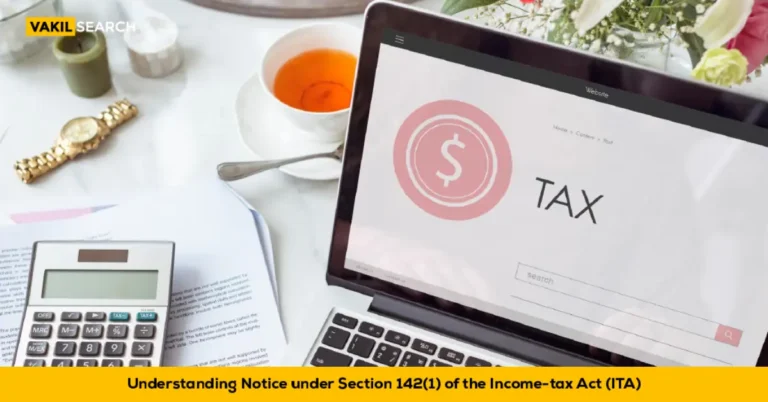Our discussion in this article will focus on the differences between Section 80TTA and Section 80TTB. We will also discuss the eligibility criteria for both the sections.
Section 80TTA is a tax saving scheme for individuals who are investing in immovable property (land, building etc.) with an intention to sell it within 3 years of purchase. The investment made under this section can be either residential or commercial. However, if you have invested more than ₹1 Crore then you need to get registration from the income tax department. There is no need to register if your investment does not exceed ₹1 crore.
In case of Section 80TTB, there is no such restriction on the investment amount. You can invest upto ₹50 lakhs without getting registration. In addition to that, you also won’t be required to pay any taxes on capital gains. This is applicable only when you sell the property after 5 years of its purchase.
Is Section 80TTA different from Section 80TTB in terms of key differences?
1) Registration is required:
If you are investing in immovable properties which are worth more than ₹1 crore then registration is mandatory. But if you are investing in immovables that are worth less than ₹1 crore, then you do not require any registration.
2) Tax Saving:
Under Section 80TTA, you will save 15% tax on the total cost of the property. Whereas, under Section 80TTB, you will save 30% tax on the total capital gain.
3) Time Limit:
Under Section 80TTA, the time limit for selling the property is 3 years. On the other hand, under Section 80TTb, the time limit for sale is 5 years.
4) Capital Gains:
The difference between these two sections lies in the fact that under Section 80TTB you will pay 30% tax on the capital gain whereas under Section 80TTA you will pay 15% tax on the same.
*Note:* Although both schemes provide similar benefits, they differ in terms of taxation. Make sure that you pick the right one.
Unlock financial success with our unparalleled accounting services – your gateway to streamlined bookkeeping and prosperity.
Section 80TTA Versus Section 80TTB: What’s the Difference?
Neither of them differs from the other. Both Section 80TTA and 80TTB allow deduction of tax at the time of sale or purchase of assets.
- There is, however, a difference in how the tax deduction amount is calculated.
- Under section 80TTA, you can deduct 15% of the cost of the asset from the taxable income. Whereas under section 80TTB, you can deduct 20% of the gain realized by selling the asset.
- If you sell an asset worth ₹10lakh, then you will get ₹2lakh after paying tax
- Under section 80TTA, the tax paid on ₹2lakh will be ₹0.15lakh 15% of ₹2lakh
- Under section 80TTB, the tax paid on the same ₹2lakh would be ₹0.20lakh 20% of ₹2lakh.
- So, the net result is that you will get ₹0.05lakh more than what you would have got had you claimed section
Effortless tax planning – our Tax Calculator India simplifies the complexities for you.
What is the eligibility for Section 80TTA ?
- Individuals with annual income below ₹2.5lakh are eligible for claiming Section 80TTA. You should be an individual having a PAN card and should be a resident of India.
- Section 80TTA is available for all types of investments including residential as well as non-residential.
Who Is Eligible for Claiming Section 80TTB/80TTA?
Eligibility Criteria for Section 80 TTA:
- To qualify, the taxpayer must be a resident individual or a Hindu Undivided Family (HUF)
- The interest income must be exclusively from savings accounts, which should be held in a bank, post office, or cooperative society engaged in banking activities.
Eligibility Criteria for Section 80 TTB:
- The taxpayer must be a senior citizen aged 60 years or older
- The deduction applies to interest income from savings accounts, fixed deposits, and recurring deposits
- The financial institution must be a bank, post office, or cooperative society conducting banking activities.
Under Section 80TTA, how much money can I claim?
- This section allows you to claim up to 15% of the asset’s cost.
- For example, if you buy a house worth ₹50lakh, then the maximum you can claim is ₹7.5lakh.
- For residential properties, the maximum amount that you can claim is ₹7.5lakh; whereas for non-residential properties, you can claim up to ₹10lakh.
What is the eligibility for Section 80TTB?
- Individuals having annual income above ₹2.5lakh are eligible for claiming Section TTB. You should be an individual having a PAN card and should be a resident of India.
- Individuals who invest in immovable properties such as land or buildings are eligible for this scheme.
- In case of investment in immovable property, you can claim up-to 30% of the capital gains. For example, if your property is sold for ₹1crore, then you can claim up to ₹300lakhs.
- In case of investment in movable property, you can claim the entire amount of capital gains.
What Is the Procedure for Claiming Section 80TTA?
- To avail this benefit, you need to fill out Form 16A (TCS) and submit it along with other documents to the Income Tax Notices
- The form needs to be filled within 3 years of the date when the asset was acquired. If you fail to file the return within the stipulated period, then you may not be able to claim the deduction.
How Is Section 80TTB Claimed?
- In order to avail this benefit, you must first file a declaration form declaring that you have invested in immovable property. This form needs to be filed within three years of the date when you purchased the asset.
- After filing the declaration, you need to file a return stating the details of the asset which has been purchased. The return needs to be filed within one year of the end of the financial year.
- If you do not comply with any of these conditions, then you cannot claim the benefits under either of these sections.
Can I Claim Both Section 80TTA and 80TTB?
- Yes. You can claim both schemes together. However, you need to file two separate filing returns
- If you want to claim both deductions at once, then you need to file two declarations – one for each of the schemes.
When Can I Claim Section 80TTA or 80TTB?
- These provisions are available from April 1, 2016, onwards.
- However, if you file the return before April 1, 2017, then you will get the benefit of the earlier tax rate applicable on the capital gain.
Who Is Eligible for Claiming Section 80TTB/80TTA?
- Individuals having annual income of more than ₹2.5 Lacs are eligible for claiming Section TTB/TTA.
- You need to be a resident of India in order to avail the benefits of this provision.
Conclusion
- Section 80TTA is meant for individuals investing in immovable property. It allows them to deduct the cost of purchase against their taxable income.
- On the other hand, Section 80TTB is meant for individuals investing in movable assets. They can claim the full value of capital gains as a deduction.
- Both the schemes allow individuals to claim the same amount of deduction. However, they differ in terms of eligibility criteria.
Frequently Asked Questions
Can I claim 80TTA and 80TTB both?
No, you cannot claim deductions under both Section 80TTA and Section 80 TTB simultaneously. Section 80TTA is applicable to individuals and Hindu Undivided Families (HUFs) for interest earned on savings accounts. In contrast, Section 80 TTB provides higher deductions specifically for senior citizens aged 60 and above.
Who is eligible for 80TTA?
Section 80TTA is available to individual taxpayers and Hindu Undivided Families (HUFs). It allows a deduction of up to ₹10,000 per financial year on interest earned from savings accounts held in banks, post offices, or cooperative societies. This benefit is not available to senior citizens who qualify for Section 80 TTB.
What is the 80TTB claim?
Section 80 TTB provides a deduction for senior citizens aged 60 years or above. This section allows a deduction of up to ₹50,000 per financial year on interest income earned from savings accounts, fixed deposits, and recurring deposits with banks, post offices, or cooperative societies engaged in banking.
Can I claim 80TTB for my parents?
Yes, you can claim Section 80TTB deductions for your parents if they are senior citizens aged 60 years or above and meet the eligibility criteria. The deduction can be claimed on interest income earned by them from savings accounts, fixed deposits, and recurring deposits, provided the financial institution is a bank, post office, or cooperative society.










